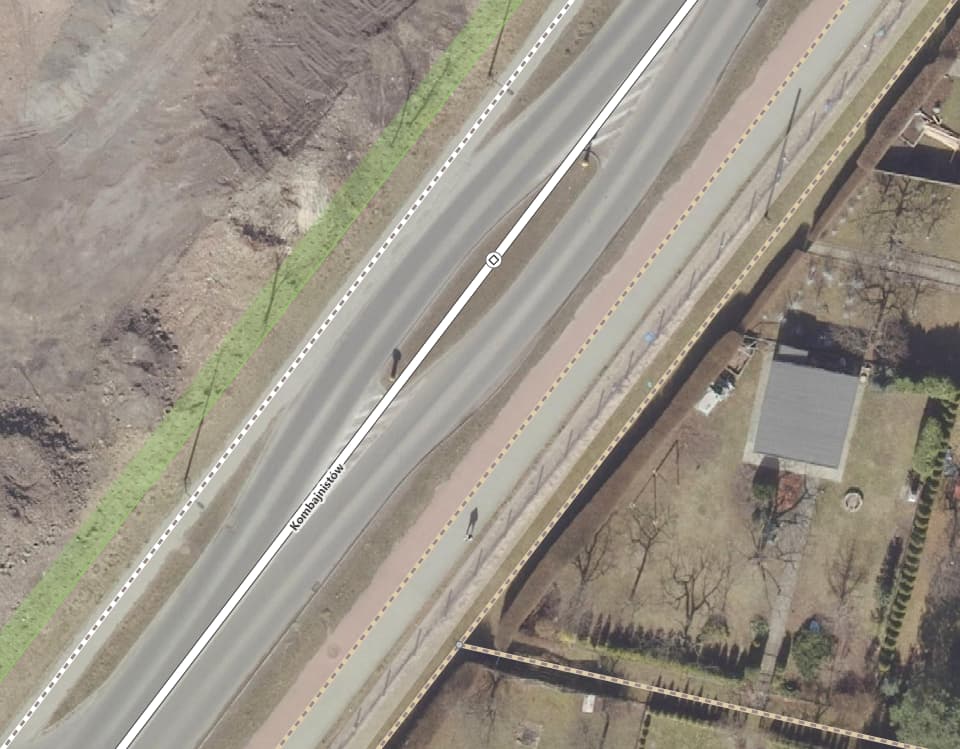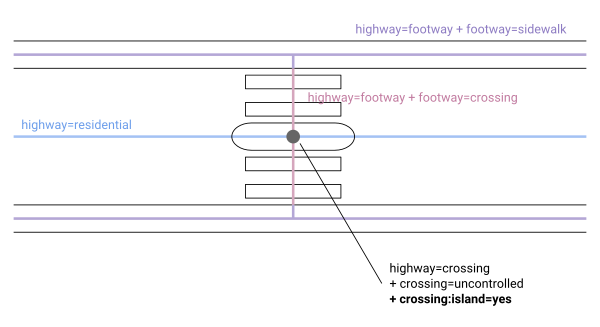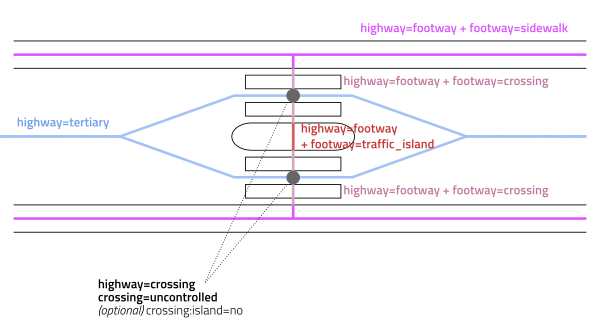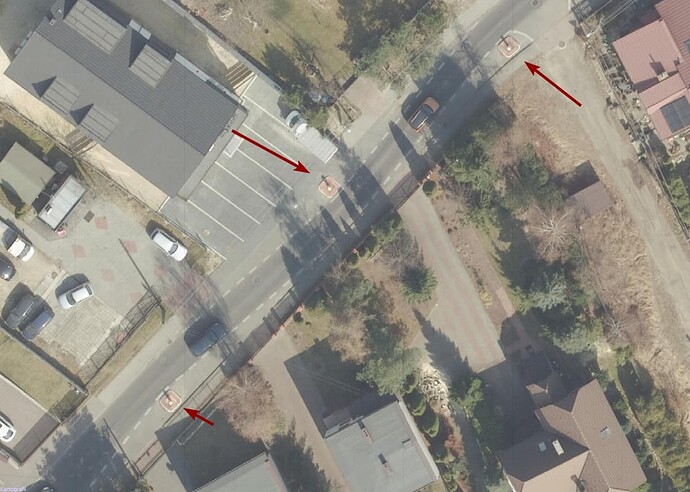Hello fellow mappers!
I have been mapping traffic islands for some time now and while most of the time it is pretty straightforward thing to do, I still managed to find myself in few places scratching my head. I need a little help on how it should be done in few specific situations and prehaps even standardize it for the future. I have been mapping traffic islands as an area with few occasions as a point.
Traffic island wiki: Wiki
When there is a highway that is pretty wide and there has been mapped one-way separate paths (primary roads or secondary roads), its easy to add a traffic island or something different like land_use=grass etc. This often depends on the level of the highway e.g. if its primary road, secondary road, tetriary road and so on. In case of primary and secondary road, usually paths are mapped as one-way and separated from each other. Hence why its so easy to map traffic islands between those one-way paths as an areas. Adding traffic island as an area and also outlining it with the curb is straightforward and simple.
For example this traffic island: Area example
Same applies to tertiary and and other roads if they have been already mapped as one-way separate paths. This happens usually on big crossings or roundabouts and then traffic island is added between these paths.
For example: Area example
Now for the traffic islands mapped as a point.
When there is no crossing and the highway is mapped as tertiary or some other minor road, simply adding traffic island as a point is already good enough and works perfectly well. Also aligns perfectly with the wiki of traffic island. The reason for that is tertiary and other minor roads usually are not mapped as separate one-way paths. They are mapped as single two-way path. And because of that using traffic island as a point, its perfect.
Here is a good example: Point example
Here is an example of traffic island as a point mapped as crossing:island=yes: Crossing point example
It is also reasonably simple situation where there is not exactly a need to map traffic island as an area, in this case even refugee island since there is pedestrian crossing. However, there still could be mapped traffic island as an area putting little bit more effort into it and since its a crossing, it wont be looking like an eyesore.
And then comes the part where I am scratching my head if its wise to map traffic island as an area. Basically should we go the “overengineering” way in such situations because going such way means its micromapping with its own problems.
This is the problematic example: Example in need of help
Example has a pedestrian crossing with refugee island aka traffic island. I already have mapped some time ago traffic island as an area and added curb for the islands outline. Since there is a crossing, I have added crossing:island=yes for the crossing point. Also, the crossing as a way also has crossing:island=yes tag because the crossing way has not been separated yet.
But this kind of mapping is not great if the ways have traffic island already tagged and then adding area feature right on top of these ways. In this case tertiary road is going right through the traffic island which is not correct. Since it is a tertiary road, it does not usually follow the rule like primary and secondary roads follow - map them as separate one-way paths which on its own is also dependant on the situation.
For this example, should I separate the tertiary path creating separate one-way paths around such traffic island or remove the traffic island area leaving only the point and way tags of traffic island as crossing:island=yes?
The reason for such question is simple:
- If separate ways on each traffic island, then one massive chain-like path happens which in my opinion does not feel not great. And it the road itself is very wide, then the chain loops become also very big which in turn on map will look more like many small roundabouts rather than straight road.
- If separate one-way paths for the full length of the road, then lots of extra work uphand while the amount of traffic islands on such road is in reality quite small which in turn creates extra work for maintaining particular road data.




